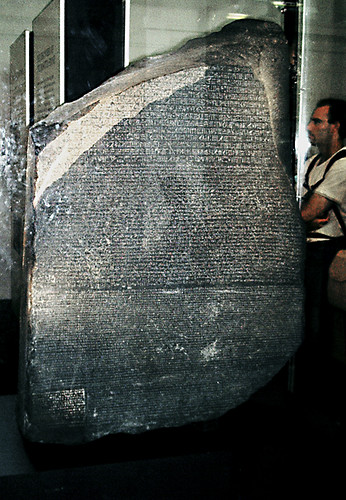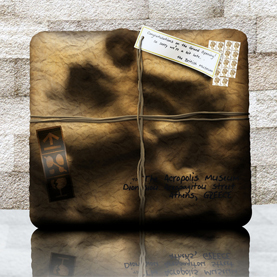 Egypt threathening to severe ties with the Louvre museum led to five looted Pharaonic steles returning to Egypt and maybe even toTetiki’stomb of which they were illegally removed. But the directory general of the SCA, Dr. Zahi Hawass, is on a quest that he hopes will lead to thehigh-profile “icons of the Egyptian identity” returning to the Cairo Museum. What’s on the wishlist? First and foremore the Rosetta Stone from the British Museum and the Nefertiti Bust from the Neues. But also a statue of Hemiunu, the bust of Anchhaf, the mask of Ka-Nefer-Neferand the painted Zodiac blasted outof theceiling of the templeat Dendera, dedicated to goddessof love Hathor.
Egypt threathening to severe ties with the Louvre museum led to five looted Pharaonic steles returning to Egypt and maybe even toTetiki’stomb of which they were illegally removed. But the directory general of the SCA, Dr. Zahi Hawass, is on a quest that he hopes will lead to thehigh-profile “icons of the Egyptian identity” returning to the Cairo Museum. What’s on the wishlist? First and foremore the Rosetta Stone from the British Museum and the Nefertiti Bust from the Neues. But also a statue of Hemiunu, the bust of Anchhaf, the mask of Ka-Nefer-Neferand the painted Zodiac blasted outof theceiling of the templeat Dendera, dedicated to goddessof love Hathor.
An exodus of artefacts
If those artefacts can’t be returned permanentlyDr. Hawass would at least like them back on load for the opening of Egypt’s Grand Museum at Giza, due by 2013. Neither the British Museum, nor the Neuesseem inclined to give us these priceless items that draw thousands of tourists every year. The BBCreports the British Museum stating:”A loan request regarding the Rosetta Stone was received and acknowledged. The request currently stands as a matter for further consideration in due course.” One can partly understand their rather chilly reactions to such requests, because if they return one artefact, where will it end? Just imagine the exodus of ancient objects from the museumsonce Greece, Rome, Iraq, Egypt, Turkey, Mexico, Peru, Benin, Chinaand Scotland all call for the return oftheir cultural patrimony.
But Dr. Hawass states the British Museum need not worry, at least not where Egypt is concerned: “I’m not asking for all the artefacts of the British Museum to come to Egypt.””I’m only asking for the unique cultural objects,” he added, referring to items of great archaeological value, such as the Rosetta Stone.

It was once thought that when the New Acropolis Museum opened, the Parthenon Friezes would be returned from the British Museum toAthens. One could say the Elgin Marbles were ‘legally looted’, as they were sold when Greece was occupied by the Ottoman Empire and it’s not even sure if that deal actually allowed Elgin to chip off the friezes from the Parthenon.
Outreach or local reach
But surely, isn’t it better to have the Rosetta Stone in London, which gives more people the opportunity to marvel at it than if it were in theEgyptian Museum atCairo? Isn’t it great to have one spot whichyou can visit to taste and learn about Roman, Assyrian, Aboriginal and Egyptian culture? This used to be one of the arguments Icould not counter. Certainly, it would be even better to learn about those cultures ‘in situ’, but not everybody can afford a yearly vacation to another continent. So Nefertitiand the Rosetta Stone reach out to people. That’s a noble cause, andone that couldjustify their forced exile?
Wafaa al-Saddiq, the director of the Egyptian Museum in Cairo doesnot think the ‘outreach effect’ is enough:”I have very mixed and difficult feelings when I go to a museum overseas and see all these wonderful items taken from Egypt. The objects are giving a good example of Egyptian civilisation to people in different countries so that they then come here to see the Pyramids and tombs,”she told the BBC. “At the same time, I always say the Egyptian people also have the right to see these unique objects, some of which were taken when Egypt was under occupation, so my first wish is that they come back,” she adds.
And Wafaa al-Saddiq definitely has a point there. The average wages in Berlin and London are higher than those in Egypt or Benin, so visiting Nefertiti at the Neues or flying to Paris to see the DenderaZodiac- which I could easily afford if I’d quit smoking – means a massive financial sacrifice for the very people who’s heritage these museums hold. Which just does not seem just. So maybe Nefertiti should be given the chance to reach out to her ‘own people’ first?